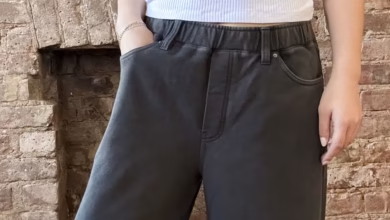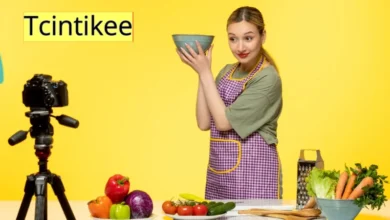Triangular Trellis – Stylish Garden Support for Climbing Plants

A garden thrives when structure meets creativity and one of the most effective ways to bring both into your outdoor space is through the use of trellises. Among the many options available, the triangular trellis has become a popular choice for gardeners who value both function and beauty. Unlike flat or rectangular trellises, a triangular design provides a unique balance of practicality, stability, and style.
A triangular trellis serves as more than just a support for climbing plants—it is also a decorative feature that elevates the entire look of a garden. Whether you are a fan of lush roses, cascading clematis, or edible plants like beans and cucumbers, this trellis shape provides the right foundation for growth. Its space-saving design makes it especially attractive for small gardens, patios, or balconies where vertical gardening is the key to maximizing limited space.
In addition to being visually appealing, triangular trellises are known for their sturdy build. The angled design distributes weight evenly, making them less likely to topple in windy conditions compared to traditional flat trellises. This combination of practicality and beauty has made triangular trellises a must-have for modern gardeners who want to transform their space with a simple yet powerful feature.
What is a Triangular Trellis?
A triangular trellis is a three-sided plant support structure, often designed as a freestanding or A-frame frame. Unlike flat trellises that are fixed against a wall or fence, the triangular design allows for plants to grow on multiple sides, creating a fuller and more dynamic display. They are available in a variety of sizes, ranging from small tabletop trellises for potted plants to large garden structures that can support tall climbing vines.
The triangular shape provides added stability, making it ideal for both lightweight climbers like peas and heavy growers such as climbing roses. The wide base and angled sides create a strong foundation that resists tipping, even when plants become lush and heavy. This is particularly useful in outdoor gardens where exposure to wind and rain can otherwise cause issues.
Common materials used for triangular trellises include wood, metal, and plastic. Wooden trellises offer a rustic charm that blends seamlessly into natural garden settings, while metal trellises bring durability and a more modern aesthetic. Plastic or resin trellises are lightweight, affordable, and weather-resistant, making them a practical option for budget-conscious gardeners.
Overall, the triangular trellis is a versatile structure that not only supports plant growth but also enhances the visual impact of any outdoor or indoor gardening project.
Benefits of Using a Triangular Trellis in Your Garden
One of the most significant benefits of a triangular trellis is its ability to provide strong support for climbing plants. Garden favorites such as clematis, ivy, cucumbers, beans, and sweet peas thrive when given a vertical structure to cling to. With a triangular trellis, plants are able to grow upwards in a balanced way, creating a lush canopy of greenery or colorful blooms.
Another advantage lies in its space-saving design. For gardeners working with limited space—such as balconies, patios, or small backyards—a triangular trellis maximizes vertical growing potential. It enables you to cultivate more plants without needing additional ground area, making it ideal for urban gardening and compact spaces.
The aesthetic appeal of a triangular trellis should not be underestimated. Its geometric shape adds structure and visual interest, transforming even the simplest garden into a design statement. Whether left plain for a natural look or painted in bold colors to stand out, it complements a variety of garden styles from rustic to contemporary.
Durability and stability are also key benefits. Unlike flat trellises, triangular designs distribute plant weight more evenly, reducing the risk of collapse. This makes them particularly well-suited for heavy climbers or gardens exposed to strong winds. By combining practicality with elegance, the triangular trellis becomes an invaluable feature in both functional and ornamental gardens.
Types of Triangular Trellis Designs
There are several types of triangular trellises, each with unique qualities to suit different gardening needs.
Wooden Triangular Trellis: These offer a natural, rustic look that blends seamlessly with greenery. They are often customizable, allowing gardeners to stain, paint, or leave them unfinished. Wooden trellises are perfect for ornamental gardens and traditional landscapes.
Metal Triangular Trellis: For those who prefer durability and modern design, metal trellises are a great choice. Made from materials such as wrought iron or steel, they withstand weather extremes and provide long-lasting plant support. Their sleek designs often complement contemporary gardens.
Plastic or Resin Trellis: Lightweight and budget-friendly, plastic triangular trellises are easy to move and maintain. They are weather-resistant, making them a practical option for beginners or casual gardeners who want an affordable solution.
DIY Triangular Trellis: Creative gardeners often build their own trellises using bamboo poles, reclaimed wood, or metal rods. This allows for customization in size, shape, and design. A DIY approach also adds a personal touch to the garden, making it a fun and rewarding project.
Whether you are growing delicate vines or heavy climbing vegetables, there is a triangular trellis design to match your needs and enhance your garden space.
How to Use a Triangular Trellis in Gardening

Using a triangular trellis effectively requires careful placement and plant pairing. First, choose a location that gets adequate sunlight and is accessible for watering and maintenance. For edible plants like cucumbers or beans, placing the trellis in a vegetable patch ensures practical use, while ornamental plants like climbing roses can be placed along pathways for visual impact.
Next, select the right plants. Climbing plants such as clematis, morning glories, ivy, and grapevines thrive on triangular trellises. For edible gardens, peas, beans, and tomatoes are excellent choices. Ensure the plants are suited to the climate and position of your trellis for best results.
Installation is straightforward but important. Anchor the trellis securely into the ground or in large planters to prevent tipping. For larger structures, stakes or additional supports may be needed for extra stability.
Seasonal care is also essential. Regularly check the trellis for wear, especially if it’s made of wood. Re-stain or seal wooden trellises to protect them from rot, and check metal trellises for rust. Keeping the trellis in good condition ensures it lasts for years while continuing to support healthy plant growth.
Beyond gardening, triangular trellises can also serve creative purposes—such as acting as privacy screens, decorative dividers, or focal points in a landscaped area.
Buying Guide: Choosing the Best Triangular Trellis
When choosing a triangular trellis, consider several important factors to ensure it meets your needs.
Material is the first consideration. Wooden trellises are great for natural gardens but require maintenance, while metal ones are sturdy and long-lasting. Plastic or resin trellises are lightweight and low-maintenance, but may not hold up under heavy plant growth.
Size is another factor. Smaller trellises are suitable for potted plants and compact spaces, while larger ones are ideal for full gardens or vegetable patches. Always match the trellis size to the type of plants you plan to grow.
Durability and stability are crucial. Look for trellises with a strong build that can withstand wind, rain, and the weight of mature plants. Checking customer reviews online can help you gauge product quality.
Finally, consider budget and availability. Triangular trellises are available at garden centers, online marketplaces like Amazon, and DIY stores. Prices vary depending on size and material, ranging from affordable options to premium, decorative pieces. By comparing features and prices, you can find a trellis that fits both your gardening goals and your wallet.
Conclusion
A triangular trellis is more than just a plant support—it’s a stylish and practical addition to any garden. With its space-saving design, strong stability, and visual appeal, it caters to both functional and decorative gardening needs. Whether you choose wood, metal, plastic, or even a DIY option, this trellis shape offers versatility and charm.
By supporting a wide variety of climbing plants, triangular trellises bring vertical beauty to gardens big and small. They’re also durable, easy to use, and available in designs to suit every taste and budget. For gardeners looking to transform their outdoor space, the triangular trellis is a simple yet powerful solution.
FAQs About Triangular Trellis
What plants grow best on a triangular trellis?
Climbing roses, clematis, ivy, beans, peas, and cucumbers thrive on triangular trellises.
Is a triangular trellis better than a flat trellis?
Yes, triangular trellises provide greater stability and allow plants to grow on multiple sides, offering fuller coverage.
Can I build my own triangular trellis at home?
Absolutely. Many gardeners use bamboo, wood, or metal rods to create custom DIY trellises.
What is the best material for a long-lasting trellis?
Metal is the most durable, while treated wood offers a rustic look. Plastic works for lighter plants.
Do triangular trellises work well in small gardens or balconies?
Yes, their space-saving vertical design makes them perfect for compact spaces.
How do I secure a triangular trellis in windy conditions?
Anchor it deep into the ground or use stakes for extra stability.
Can a triangular trellis be used indoors?
Yes, smaller versions work well for indoor climbing plants in pots.
Where can I buy affordable triangular trellises online?
Amazon, Etsy, and major garden retailers offer a wide range of options in different price ranges.
You May Also Read: Harry Potter Hamper




